Link para o artigo original : https://www.oaktreecapital.com/insights/insight-commentary/market-commentary/the-roundup-top-takeaways-from-oaktrees-quarterly-letters-march-2023-edition
The Roundup: Top Takeaways From Oaktree’s Quarterly Letters – March 2023 Edition
In the first few months of 2023, we’ve seen dramatic shifts in investors’ expectations regarding interest rates, the economic outlook, and, more recently, the health of the banking system. As investors seek to locate relative value in a rapidly changing environment, we believe it’s essential to consider what’s happening in a range of asset classes. In the current installment of The Roundup,1 Oaktree portfolio managers discuss important trends they’ve observed in recent months, including the significant spike in distressed debt opportunities, growing political risk in emerging markets, and the unprecedented expansion of the direct lending universe. Plus, we’ve included an excerpt from Howard Marks’s 2022 year-end letter to clients.
1
Risk Posture:
Finding Balance
In 2022, the markets switched from soaring to collapsing, and the declines in stock and bond prices brought valuations into less-elevated territory. The S&P 500’s p/e ratio based on forward earnings is still above average, but less so. Similarly, bond yields have moved from “lowest ever” to what I call “more than ample.” Thus, valuations aren’t crazy, and prospective returns aren’t as glaringly low as they were in late 2020 and throughout 2021. I feel the excesses of those years have mostly been driven out of the markets, and while stocks in particular aren’t “cheap,” I don’t think they can be said to be in a bubble.
In the last few years, I’ve talked about the tendency of investor psychology to oscillate wildly between “flawless” and “hopeless.” There were times around the end of 2020 when people acted as if the outlook might be flawless, because (a) an economic recovery lay ahead; (b) the Federal Reserve was likely to produce perpetual prosperity and continuously rising markets by keeping interest rates “lower for longer”; and (c) our federal deficits and debts had been rendered innocuous, according to Modern Monetary Theory.
These bullish factors were accompanied by — or resulted in — elevated equity prices and ultra-low interest rates. Now, all the above points have been questioned, and I doubt many people find the outlook flawless anymore. Thus, the pendulum of investor sentiment currently resides between the extremes. For this reason, we’re maintaining our customary balance between defensiveness and aggressiveness (which reflects our usual emphasis on risk control rather than short-term return maximization).
I’ve seen times in my career when the markets were laughably high or crazily low, permitting a “market call” to be made with a good chance of success. With things in rough balance as described here, I doubt this is one of them.
2
Distressed Credit:
Bargain-Hunting Season
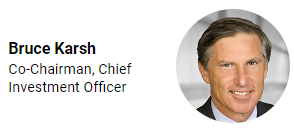
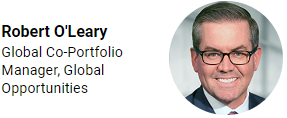

The rapid rise in interest rates in the last year and the related drop in new issuance of high yield bonds and leveraged loans have dramatically expanded the opportunity set for distressed liquid credit. In February 2022, our weekly screening report for U.S. distressed liquid credit opportunities included roughly ten names. Today, it has well over 100 names. And these opportunities are incredibly diverse, as almost every type of company has been impacted by the combination of higher interest rates and reduced financing options.
Importantly, the quality of opportunities has also improved. Just one year ago, the companies with senior or secured debt offering yields greater than 15% were mostly those that seemed destined for a painful restructuring in which lenders would be lucky to recover a fraction of their investments’ face value. Today, we’re seeing a large number of companies with debt trading at a yield above 15% that have substantial assets and whose creditors have much better prospects in a restructuring.
The last meaningful expansion of distressed liquid credit opportunities occurred during the early days of the pandemic, but it was short-lived, largely because of government intervention. (See Figure 1.) We believe the opportunity building now will persist for much longer, because (a) the disruptions of the last three years have likely wrought economic damage that we’re only beginning to see and (b) governments and central banks can no longer use unlimited stimulus to bail out economies, given the need to control inflation.
We believe we’re about to learn that many companies, buyout sponsors, and market participants have built their business models, balance sheets, and valuation assessments on a foundation of ultra-low interest rates. In other words, Silicon Valley Bank won’t be the last casualty of the abrupt end of the easy money era. In Howard’s recent memo Sea Change, he wrote, “We’ve gone from the low-return world of 2009-21 to a full-return world, and it may become more so in the near term…. Lenders and bargain hunters face much better prospects in this changed environment than they did in 2009-21.” We couldn’t agree more.
Figure 1:The Covid-19 Crisis Was Short-Lived in Debt Markets
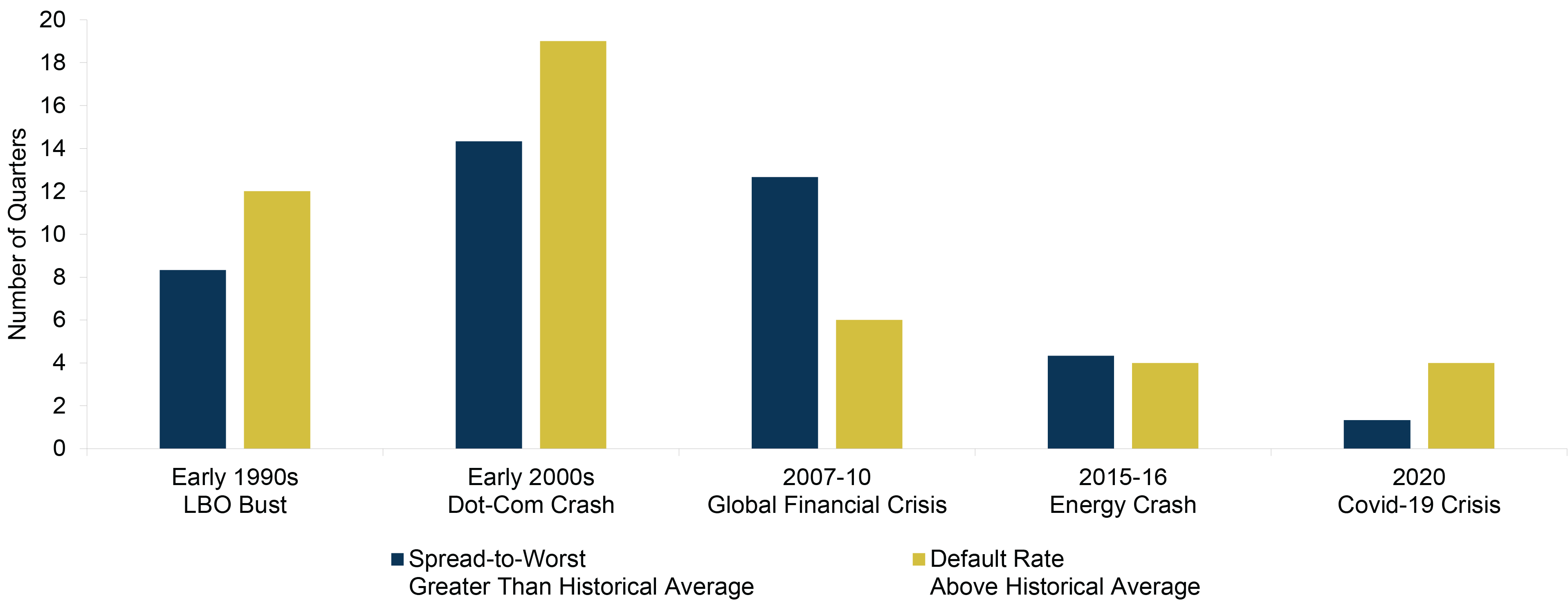
Source: Altman for default rates; FTSE US High-Yield Market Index for spread-to-worst
3
Corporate Structured Credit:
Top of the Class
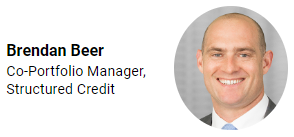

CLOs continue to be our highest-conviction investment category in structured credit, with compelling opportunities in both the U.S. and European markets. As we recently noted in CLO Myth-Busting: The Top Three Misconceptions and CLOs: What You Need to Know, these securities have much to recommend them. First, CLO yield spreads are relatively wide compared to those of similarly rated high yield bonds and leveraged loans, even though CLOs offer greater diversity and robust structural protections. For example, the yield spreads of BB-rated CLOs are roughly 650 basis points wider than those of BB-rated bonds,2 and the yield spreads of A-rated CLO tranches are currently in line with those of BB-rated loans.3
Additionally, we believe the risk/return profile of CLOs improved in 2022, as yield spreads of BBB- and BB-rated CLOs widened meaningfully, even though the leveraged loan default rate remained below the long-term average of 3.1%.4 (See Figure 2.) CLOs’ floating-rate nature and the aforementioned structural protections also make them attractive in an uncertain economic environment in which interest rates are rising.
CLO prices rose broadly in early 2023, largely due to the narrowing yield spreads of newly priced CLOs, but prices fell recently as volatility increased across most markets.5 Even though we’re bullish about the current opportunity set in the CLO market, we’re cognizant that prices may remain volatile in the coming year. Default rates are rising in the loan market and investor sentiment regarding the macroeconomic outlook is liable to prove fickle, especially given the collapse of Silicon Valley Bank and growing concerns about weakness in other financial institutions. But we also think CLOs have the potential to outperform long term because — unlike many other securities — CLOs are structured based on the assumption that market downturns will occur.
Figure 2: Yield Spreads of BBB- and BB-Rated CLOs Widened in 2022
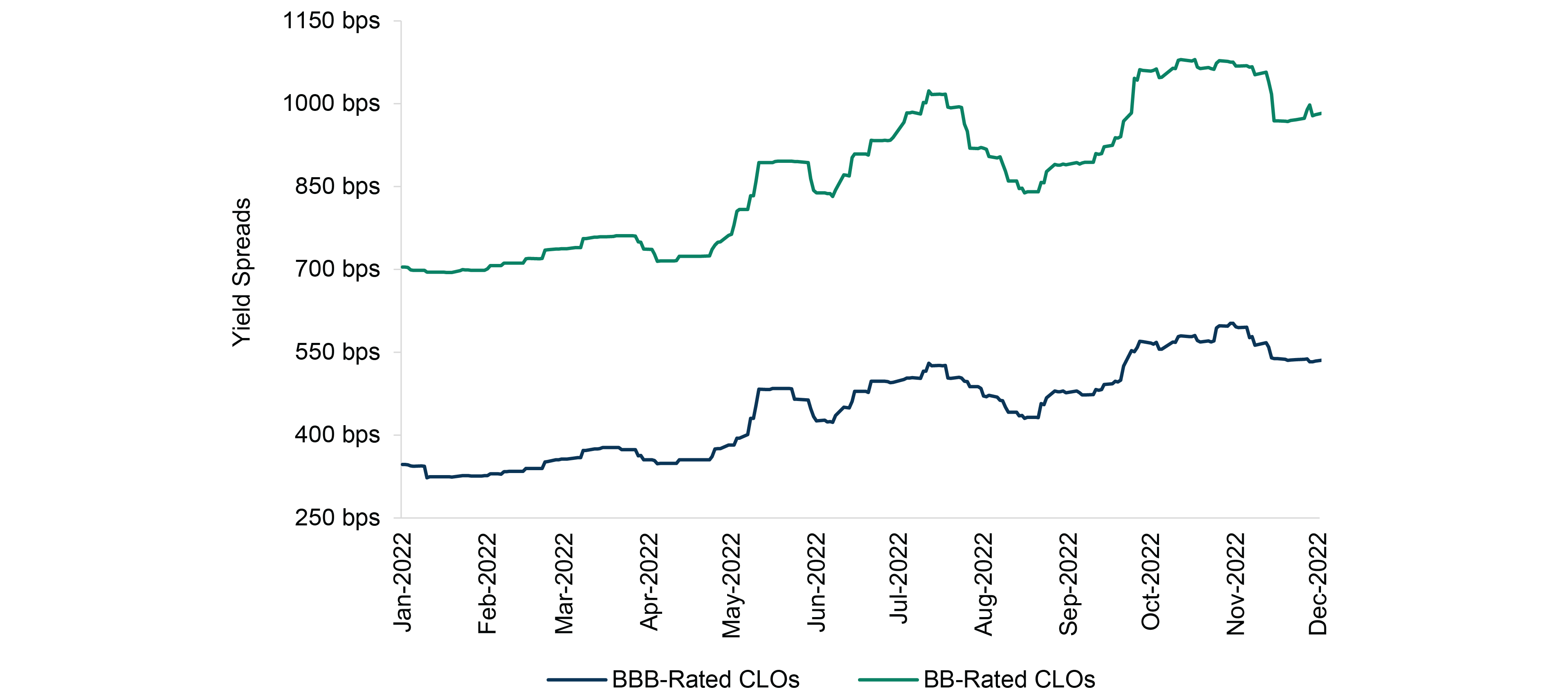
Source: JP Morgan CLO Post-Crisis BBB Index, JP Morgan CLO Post-Crisis BB Index
4
Emerging Markets Debt:
Inside Out
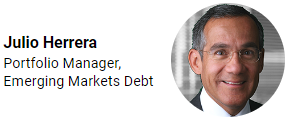
After a tumultuous year, what obstacles could be in store for emerging markets debt in 2023? In 2022, the EM high yield bond index and the EM sovereign bond index recorded losses of 10% and 18%, respectively — among the worst annual total returns for these indices since 1999.6 The causes were both internal — most notably the war in Ukraine — and external, primarily rising interest rates and elevated inflation in developed markets. While a few concerns have been resolved, such as those related to China’s zero-Covid policy, the majority have not.
However, the yield spreads of EM assets aren’t reflective of bear market conditions. In fact, average spreads in the EM high yield bond market are only roughly 15 bps wider than the 10-year average.7 In order for these valuations to hold, a lot needs to go right within EM countries. First, the economic recovery in China and greater Asia needs to continue unabated. Next, the war in Ukraine needs to be contained (or, better yet, ended). And rising political risk in Latin America needs to be controlled.
Political risk has become an increasingly important underwriting variable for investors in this asset class, as EM countries face the socioeconomic fallout from the pandemic. Preserving governability and social peace may be challenging moving forward, due to (a) the slow progress made in improving socioeconomic conditions in EM countries over the last decade, (b) citizens’ deep distrust of the political establishment, and (c) the increasing perception that economic and political systems are broken. (See Figure 3.)
Sentiment about EM debt improved toward year-end, largely due to favorable global economic trends, the reopening of China’s economy, and the limited number of corporate defaults in most regions. But refinancing risk remains elevated for many EM borrowers: EM corporate bond issuance fell by more than 60% year-over-year in 2022, and the trend was even worse for high yield bond issuers.8 Moreover, EM assets could be subject to another bout of intense volatility if fears resurface about a potential global recession in 2H2023 or 2024, a scenario that appears more likely given concerns about the banking system in developed markets. Thus, whether they’re looking inside or out, EM debt investors have plenty of reasons to remain cautious.
Figure 3: Populism Rises as Citizens’ Faith in Government Declines

Source: Ipsos, “System Is Broken” Index measures sentiment regarding political and economic systems9; originally published by Goldman Sachs
5
Real Estate:
Surveying the Landscape
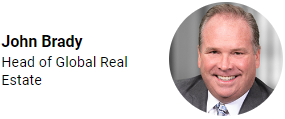

In recent decades, many real estate investors bid up asset prices and increased their use of leverage as they came to rely on predictable growth and a low cost of capital. But these trends appear to be reversing. We believe we’re currently seeing the start of an economic downcycle in the U.S., as the lagged impact of tightening monetary policy is beginning to be felt in several parts of the economy. In the real estate market, rising financing costs have made lenders more selective about which projects they’ll fund and at what cost. As a result, the number of distressed opportunities in certain real estate sectors has grown significantly.
These pressures will likely persist throughout 2023, creating both challenges and opportunities for real estate investors. First, we think market volatility, economic uncertainty, and rising cap rates will increase the dispersion of returns by market, sector, and property — which will make active management of real estate assets especially important. For example, we expect residential real estate to be resilient during the next economic cycle, as underbuilding in the decade following the Global Financial Crisis has caused supply in the U.S. housing market to be well below demand. Meanwhile, the industrial sector has benefited from (a) broad-based demand for warehouse space and (b) the limited supply of industrial properties in coastal markets.
Ultimately, real estate investors with a focus on risk control as well as significant expertise in debt and equity can potentially capitalize on the new opportunities created by this challenging macroeconomic environment while also properly managing their current portfolios.
6
High Yield Bonds:
Avoiding the Losers

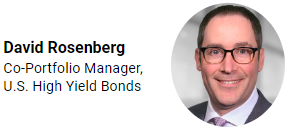
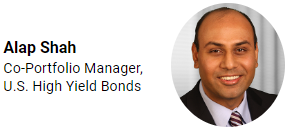
The market downturn in 2022 dramatically changed the investment landscape for high yield bonds. The average yield of U.S. B-rated bonds roughly doubled in 2022. While yields declined in early 2023, they’ve since climbed back near 9.0%.10 Thus, institutional investors that need to earn a return in the high single digits can potentially do so without having to take equity risk. Additionally, yield spreads of U.S. high yield bonds have expanded in recent weeks after contracting earlier in the year and are now near the upper end of the normal range of 300-500 bps.11 Moreover, the average bond is trading at a significant discount, so investors have the potential to earn meaningful capital appreciation.
Overall, we think high yield bonds are providing investors with a compelling investment opportunity. As Howard might say, they’re “cheap as usual.” And the current volatility resulting from the perceived weakness in the banking system could generate more bargains.
But investors should be selective. Tremendous uncertainty surrounds the outlook for inflation, interest rates, and the economy. We believe successful investment in 2023 will be driven more by avoiding pitfalls and minimizing credit losses than stretching for yield. In this type of market, we think skilled managers with a rigorous bottom-up approach to high yield bond investing are well positioned to outperform.
7
Direct Lending:
A Whole New World

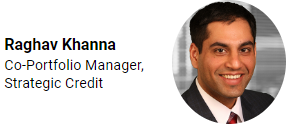

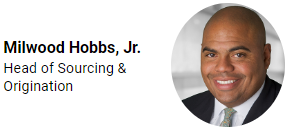
We’ve seen a massive gap emerge in the funding market for large leveraged buyouts. Private equity sponsors have roughly $2.5 trillion of dry powder and are thus in need of debt financing to lever their investments.12 But banks, which have historically underwritten most of the debt for large LBOs, retreated in 2022. Private lenders have sought to fill this void, but most lack the necessary scale. (The average LBO deal eclipsed $1 billion in 2021, so buyout loans can easily top $500 million.13) Moreover, many private credit funds may have limited capacity to lend if aggressive investments they made in recent years aren’t working out as planned.
As a result, direct lenders with sufficient scale are now in a position to potentially earn attractive yields and secure significant investor protections. Average coupons available for large LBO loans have widened by approximately 150 bps in the last year, rising to SOFR+650-700 bps — which is more than 11% today.14 Additionally, average loan-to-value ratios for large LBO loans have fallen from 60-70% a year ago to 40-50% today.15 While the vast majority of large buyout deals were covenant-lite in recent years, almost all new deals include protective covenants.
Importantly, we don’t believe banks will quickly resume underwriting large numbers of LBO loans. Broad market weakness in 2022 left banks with roughly $80 billion in loans that they underwrote but weren’t able to syndicate.16 In recent months, banks seeking to unload this debt have had to do so at a discount, generating losses. Thus, it’ll likely take time for banks to regain the ability and the willingness to underwrite massive buyout loans.
This is especially true following the failure of Silicon Valley Bank and the hasty acquisition of Credit Suisse. Banks are likely now focused on shoring up their balance sheets and reducing risk. Moreover, new regulatory changes brought about by the SVB collapse could further curtail banks’ lending activity.
In our view, this is the first time in many years that LBO loans are offering compelling yields and being appropriately structured. We think the combination of generous interest, low leverage ratios, and better covenants — primarily on companies’ senior-most debt — presents an exceptional opportunity for direct lenders.
Figure 4: The Average Yield of Loans for Large LBOs17 Has Increased Sharply

Source: Pitchbook LCD
ENDNOTES
- 1The content is derived from or inspired by ideas in 4Q2022 letters or other materials sent to clients in 1Q2023; the text has been edited for space, updated, and expanded upon where appropriate.
- 2JPM CLOIE Post Crisis BB CLO Discount Margin, ICE BofA BB U.S. High Yield Index, as of March 15, 2023.
- 3JPM CLOIE Post Crisis A CLO Discount Margin, JP Morgan BB Leveraged Loan Index, as of March 15, 2023.
- 4JP Morgan Default Monitor, includes distressed exchanges; the long-term average is the monthly average over the last 30 years; the long-term average default rate is 3.0% excluding distressed exchanges.
- 5Based on Oaktree observations in the market, as of March 15, 2023.
- 6JP Morgan CEMBI Broad Diversified High Yield Index; JP Morgan Emerging Markets Bond Index.
- 7JP Morgan CEMBI Broad Diversified High Yield Index, as of March 15, 2023.
- 8JP Morgan.
- 9Ipsos’s “System is Broken” Index is as of December 2022. Ipsos’s Populism Index is as of July 2021 because it wasn’t provided in the latest Ipsos report. Both data points for Russia are as of July 2021, as Russia wasn’t included in the 2022 report.
- 10ICE BofA Single-B US High Yield Index, as of March 21, 2023.
- 11ICE BofA US High Yield Constrained Index, as of March 21, 2023.
- 12Preqin.
- 13Dealogic for $1 billion figure; $500 million figure based on Oaktree observations in the market, as of February 28, 2023.
- 14Pitchbook LCD, as of February 28, 2023.
- 15Pitchbook LCD, as of February 28, 2023.
- 16Deutsche Bank, Credit Suisse, Bloomberg, and Moody’s Analytics, as of November 25, 2022. Includes committed LBO debt financings by banks totaling $1 billion or more.
- 17Large LBO loans defined as those to companies with $50 million or more of EBITDA.
© 2023 Oaktree Capital Management, L.P.
Informações sensíveis e divulgação
Este memorando expressa as opiniões do autor na data indicada e tais opiniões estão sujeitas a alterações sem aviso prévio. A Oaktree não tem a obrigação de atualizar as informações aqui contidas. Além disso, a Oaktree não faz nenhuma representação, e não se deve assumir que o desempenho dos investimentos passados é uma indicação de resultados futuros. Além disso, onde quer que haja potencial de lucro, também existe a possibilidade de prejuízo. Este memorando está sendo disponibilizado apenas para fins educacionais e não deve ser usado para qualquer outro propósito. As informações contidas neste documento não constituem e não devem ser interpretadas como uma oferta de serviços de consultoria ou uma oferta de venda ou solicitação de compra de quaisquer títulos ou instrumentos financeiros relacionados, em qualquer jurisdição. Certas informações contidas neste documento sobre tendências econômicas e desempenho são baseadas ou derivadas de informações fornecidas por fontes terceirizadas independentes. A Oaktree Capital Management, L.P. (“Oaktree”) acredita que as fontes das quais tais informações foram obtidas são confiáveis; no entanto, não pode garantir a exatidão de tais informações e não verificou de forma independente a exatidão ou integridade de tais informações ou as suposições nas quais tais informações se baseiam. Este memorando, incluindo as informações aqui contidas, não pode ser copiado, reproduzido, republicado ou postado na íntegra ou parcialmente, em qualquer formato, sem o consentimento prévio, por escrito, da Oaktree.


